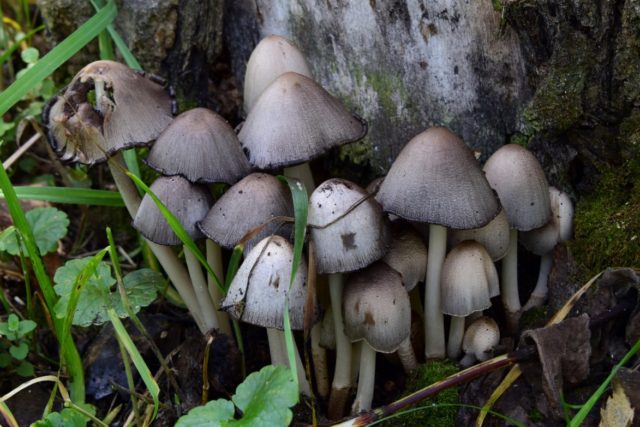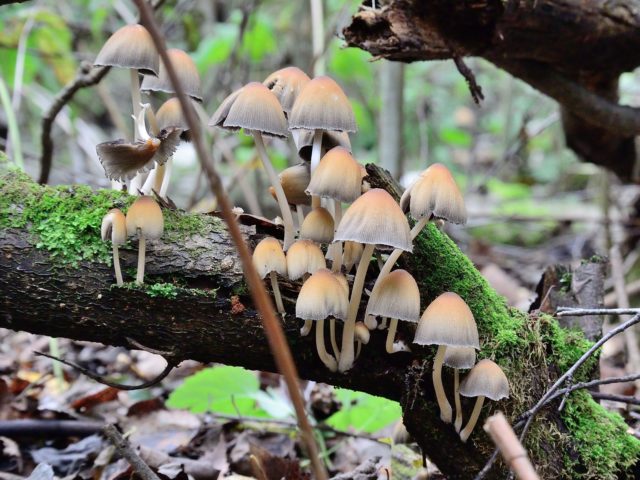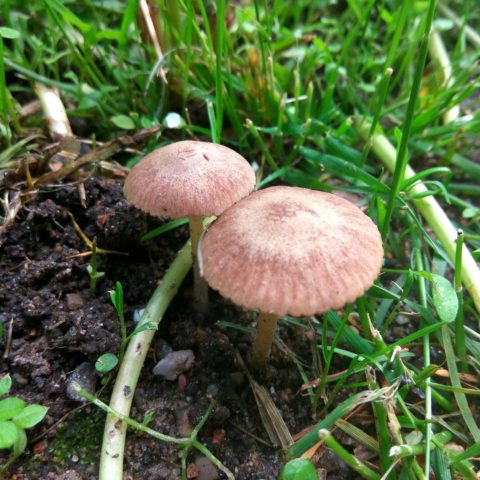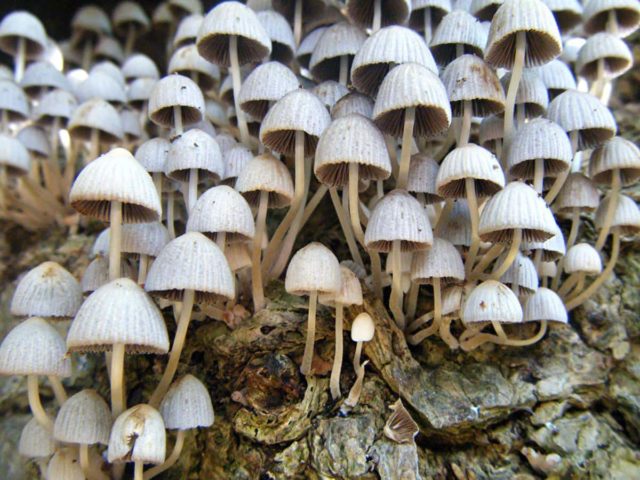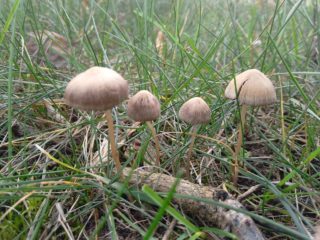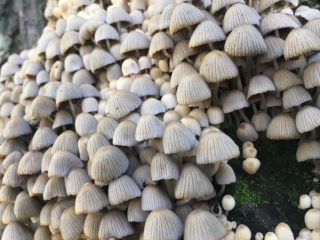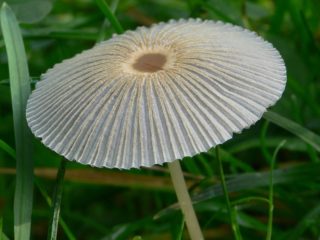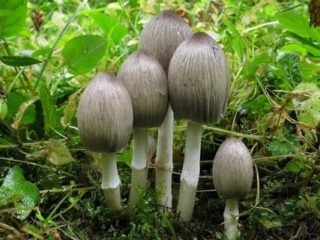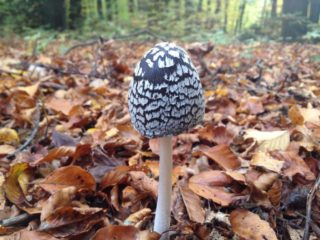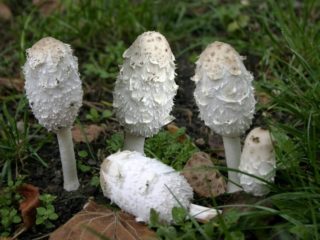Content
Gray dung beetle belongs to the class Agaricomycetes, the Psatirella family, the Koprinopsis genus. Its other names: gray ink mushroom, ink dung. Occurs in large groups. Fruiting time - May-September, grows especially actively in autumn, lives only two days. The description and photo of the gray dung beetle mushroom is presented below.
Where the gray dung beetle grows
It grows in vegetable gardens, in fields, orchards, near dung heaps, stables, not in forest clearings, dumps, near trees and stumps of deciduous species. Prefers fertilized, humus-rich soils.
It belongs to the cosmopolitan mushrooms that are found on all continents except Antarctica.
What does gray dung beetle look like?
The dung beetle looks like a toadstool.
The diameter of the cap is 5-10 cm, the height is 4-10 cm. Its shape changes with the growth of the fungus. At first, the cap looks like an egg with a wrinkled surface, then quickly turns into a wide-open bell with cracked edges, in the old specimen it turns upward. The color is whitish-grayish, gray, dirty brown, darker in the center, light towards the edges. On the surface of the cap, especially in the middle, there are dark small scales.
The leg is hollow, curved, fibrous, without a ring. Its color is white, brown at the base. Height - 10-20 cm, diameter - 1-2 cm.
The plates are frequent, wide, free, evenly distributed along the length. In young ones, they are light - whitish-gray. As they grow, they darken, after full ripening they become inky. There are spores in the liquid.
The pulp is fragile, light, darkens immediately on the cut. Has a pleasant mild smell and sweetish taste.
Dung beetle gray edible or not
Ink dung is a conditionally edible species, but with some reservations:
- You can only eat young specimens, as long as their plates are not blackened. It is advisable to collect them when the hat has just emerged from the ground.
- It cannot be consumed simultaneously with alcohol, otherwise acute intoxication will develop.
Mushroom taste
Gray dung beetle has a pleasant mild smell and sweetish taste. In terms of nutritional value and taste, it belongs to the 4th category.
Benefits and harm to the body
Dung beetle contains organic matter koprin. With the simultaneous ingestion of coprin and alcohol, poisoning occurs. In terms of symptoms, it is similar to intoxication after taking alcohol in combination with drugs for alcoholism. First, the person develops nausea, then severe vomiting. When these manifestations pass, a stable aversion to alcohol develops. The fungus acts in this way only on a person who has taken an alcoholic drink. In the 50s of the last century, gray dung beetle was used from alcoholism.
The ink mushroom was used not only in cooking and medicine.In the old days, ink was prepared from the liquid he released, which was used to sign documents.
The mushrooms were placed in a container, where the process of self-dissolution of cells began, as a result of which an ink liquid with spores was formed. It was strained, flavoring (mainly clove oil) and glue were added. It was believed that documents signed with this ink were reliably protected by a unique pattern that formed spores after drying.
False doubles
The ink pot has several types similar to it.
Shimmering dung - a little-known mushroom. It is red or yellowish-rusty, with grooves on the cap. Its diameter is 2-4 cm, the shape is ovoid or bell-shaped, the edges are even or with tears. The leg is hollow, white, brittle, length - 4-10 cm, the surface is smooth, the ring is absent, at the base it is brownish. The pulp is white, thin, with a sour smell. It got its name from the shimmering scales located on the surface of the cap. He settles in pastures, in vegetable gardens, in the forest. Grows in large colonies around tree stumps. Fruiting from June to November. Considered inedible.
Hay dung... Small in size - maximum 8 cm in height. He has a grayish-brownish or yellowish cap, fused brown plates. Hallucinogen, not edible.
Scattered dung... Unsuitable for human consumption. A hat in the form of an egg, a cone or a bell, with a velvety surface, beige or cream in color, with granular grooves or folds, up to 2 cm in diameter. The stem is grayish or whitish, fragile, transparent, from 1 to 5 cm in height. Grows on decaying wood and stumps. Found in the temperate climatic zone of the Northern Hemisphere. Growth time is summer-autumn.
Folded manure... A small mushroom with a yellowish brown, ribbed or folded cap. In the young, it has the shape of a bell, then straightens to flat. Its diameter is 0.8-2 cm. The leg is light, with a smooth surface, 4 to 8 cm high. The plates are pale yellow, the flesh is thin. Fruiting from spring to late autumn. Grows singly or in colonies. Not used for food.
Dung Romanesi... It looks more like a gray dung beetle than others. The main difference is the pronounced orange-brown or brown scales on the cap. The ink mushroom has only a few scales in the very center. In the dung beetle Romagnese, the plates also turn black with age and liquefy to the state of black mucus. It settles in colonies on rotting roots of stumps or on the stumps themselves. According to some reports, it bears fruit 2 times a year: from April to May and from October to November. It is likely that it grows in the summer months in regions with cold climates or in cool weather. The diameter of the cap is from 3 to 6 cm. It has a regular shape (ovoid or oval), with growth it takes the form of an expanded bell. The surface is whitish to beige in color, covered with adjacent dense brown or brownish-orange scales. The leg is whitish or off-white, pubescent, hollow, brittle, sometimes slightly widened downwards. Reaches a height of 6-10 cm. The plates are frequent, loose or adherent, in mature mushrooms they are purple-black, then liquefy and turn black. The pulp is white and very thin, almost odorless. Romanesi dung is classified as conditionally edible before the plates begin to undergo autolysis. There are no data on incompatibility with alcoholic beverages.
Collection rules
Ink cannon lives for two days. Only young specimens are edible, so it is better to collect it on the first day of its life. It is necessary to cut off the caps that have just emerged from the ground, which have not yet darkened.
Use
Ink dung is eaten in boiled, fried, stewed, less often pickled.
First, the mushrooms need to be processed, disassembled, peeled, washed and boiled.They can then be fried, stewed, or pickled immediately, or stored in the freezer and removed as needed. They can be stored frozen for no more than 6 months.
Gray dung can be boiled in salted water with lava leaf and black pepper.
Before frying, the boiled mushrooms must be rinsed again, then chopped and cooked in a skillet in oil along with onions. They can first be darkened under the lid for about 15 minutes, then drain the liquid and fry. Potatoes or buckwheat are suitable as a side dish. You can serve green onions and sour cream sauce with them.
Conclusion
Until recently, gray dung beetle was considered inedible in Russia, so many people take it for a toadstool and do not show interest in it. In some European countries, such as Finland, Czech Republic, it has long been used in cooking.
